Jambu Tree In Great Cosmogonic Forest Of Sacred Land Of Jambudvipa In Buddhist Mythology
A. Sutherland - AncientPages.com - Many forests of fabulous fame have been mentioned in books and described in classical writings.
Myths and legends say that Jambudvipa is one of the four continents, situated south of Mount Kailash (Mount Meru in Buddhist texts), a mountain square with four sides, more prominent at the top than the top at the bottom.
 The four island-continents, which surround Mount Meru according to the cosmology of the Buddhist teachings. A representation of our world system with Jambudvipa is pictured at the bottom center of the image. Source
The four island-continents, which surround Mount Meru according to the cosmology of the Buddhist teachings. A representation of our world system with Jambudvipa is pictured at the bottom center of the image. Source
"In the district of Himalaya, there stands the sacred mountain Kailash from which the waters of our world (the Indian subcontinent) flow down. There, on the shore of lake Anavatapta ("never warm") now identified with Manasarovar), stands the sacred Jambu tree from which our world derives its ancient name of Jambudvipa, "the isle of Jambu". Mong the twenty-four places, Mount Kailash is possibly the most famous of all, a favored destination of pilgrims from every school. Known among Hindus as the sacred abode of Shiva, this mountain has been the site of countless legends and miraculous events as recorded in the guidebooks of Buddhist and non-Buddhists alike...´" 1
Jambudvipa - of trapezoidal shape or resembling the shape of an ax-head - is inhabited by rakshasa demons. The southernmost of the four great continents of traditional Buddhist mythology is referred to as the island of the Jambu tree corresponding to the known world at the time. Most probably, it was identified with the Indian subcontinent and south-east Asia. All the other island continents are inhabited by human beings of different characteristics, lifestyles, and lifespans.
The cosmologies of Hinduism, Buddhism, and Jainism refer to the so-called 'jambudvipa,' which means "the land of Jambu trees." The Jambu tree, from which the continent takes its name, is a vast tree believed to be located in the Himalayan region.
According to tradition, Buddhas arise only on this continent, along with the so-called Universal Rulers (chakravartin). The latter represent ideal kings, who are divinely predestined to restore temporal dharma, a concept of the religious and moral law governing individual conduct. It is also one of the four ends of life.
The universe, according to Jainism, has the shape of a triangle surmounted by a hexagon. Between the two exists the Madhya-Loka where the Jambudvipa continent is located. Credit: Shree Diwakar Prakashan - Public Domain
The chakravartin has enormous power and rules over the entire earth, based on the concept dated to the times of the Maurya Empire (322 BC – 184 BC), an wide-ranging, Iron Age historical power of South Asia, founded by Chandragupta Maurya. In the sacred Puranas (in Sanskrit: "ancient, old"), chakravartin appears at certain essential moments in the cosmic cycle, and even different rulers related to historical time used to claim the title of a chakravartin.
However, "a future chakravartin is said to be born with a long list of auspicious and infallible signs, such as webbed fingers and chakras (1) on the palms of his hands, all of which are supposed to denote physical and spiritual perfection. For the Buddhists and Jains, the chakravartin is the temporal equivalent of a Buddha or a Tirthankara," 2, a savior and spiritual teacher of the dharma (righteous path).
Hindu beliefs tell of a vast cosmogonic forest full of the most remarkable flowers and plants. There is a field of flowers of light and a sacred plant of immortality in this celestial realm. From this plant, Dhanvantari - the divine physician of the gods, regarded as an incarnation of Lord Vishnu, the God of protection and sustenance - extracts the divine ambrosia.
Another sacred plant in the forest is the earlier mentioned mighty Jambu tree, which bears an immortal fruit as large as an elephant, resembling gold, and of which the seeds produce pure gold.
According to Buddhism's religious tradition, ordinary human beings represent one of the six classes of beings that live on any of four continents. The tradition continues that beings on each of these four continents remain unseen from each other and have to some extent different physical characteristics and lifespans.
It could suggest the shape of the coastline of southern India, which according to Indian Buddhists, has always been called Jambudvipa, extending 10,000 yojanas (one yojana is about 12–15 km) in extent or has a perimeter of 6,000 yojanas) to which can be added the southern coast of only 3 and 1/2 yojanas' length.
The continent takes its name from a giant evergreen Jambu tree, which grows in the middle of every continent. According to modern sources, the tree can reach up to 30 meters (98 ft) and live more than 100 years. Some assume the Jambu tree to be the rose-apple tree, as it was recently suggested, a plum tree.
However, another version of the Jambu tree story refers to the existence of only one Jambu tree. This tree is not visible to ordinary people but only to enlightened beings.
Written by - A. Sutherland - AncientPages.com Senior Staff Writer
Copyright © AncientPages.com All rights reserved. This material may not be published, broadcast, rewritten or redistributed in whole or part without the express written permission of AncientPages.com
Expand for references- Holm J, Bowker J., Sacred Place
2. W. J. Johnson, A Dictionary of Hinduism
Damien Keown, A Dictionary of Buddhism
Tibetan Buddhist Encyclopedia
More From Ancient Pages
-
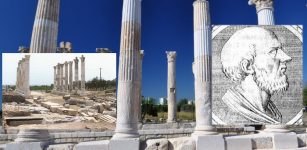 Archaeologists Focus On Greek Poet Aratus’ Memorial Tomb And Ruins Of Soli Pompeiopolis
Archaeology | Aug 12, 2020
Archaeologists Focus On Greek Poet Aratus’ Memorial Tomb And Ruins Of Soli Pompeiopolis
Archaeology | Aug 12, 2020 -
 8,200-Year-Old Needles Unearthed In Turkey’s Izmir
Archaeology | Jul 13, 2022
8,200-Year-Old Needles Unearthed In Turkey’s Izmir
Archaeology | Jul 13, 2022 -
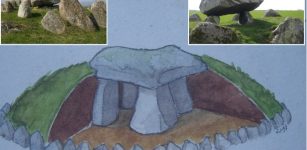 Skegriedösen (Skegrie Dolmen) – 5,000-Year-Old Stone Chamber Tomb In Southern Sweden
Featured Stories | Feb 11, 2023
Skegriedösen (Skegrie Dolmen) – 5,000-Year-Old Stone Chamber Tomb In Southern Sweden
Featured Stories | Feb 11, 2023 -
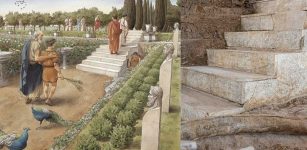 Lavish Home And Exotic Garden Of Emperor Caligula Discovered In Rome
Archaeology | Nov 19, 2020
Lavish Home And Exotic Garden Of Emperor Caligula Discovered In Rome
Archaeology | Nov 19, 2020 -
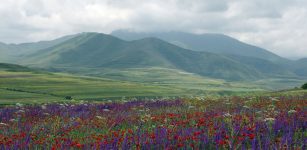 DNA Offers Insights Into The Use Of Plants By Humans In The Paleolithic Age
Archaeology | Oct 13, 2022
DNA Offers Insights Into The Use Of Plants By Humans In The Paleolithic Age
Archaeology | Oct 13, 2022 -
 A King’s Discovery Of A Mysterious Underground World
Featured Stories | Mar 30, 2024
A King’s Discovery Of A Mysterious Underground World
Featured Stories | Mar 30, 2024 -
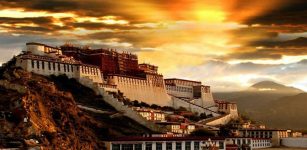 Lhasa’s Potala Palace: Greatest Building In Tibet With History Of 1300 Years
Civilizations | Nov 23, 2018
Lhasa’s Potala Palace: Greatest Building In Tibet With History Of 1300 Years
Civilizations | Nov 23, 2018 -
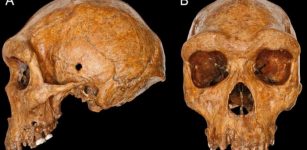 Skull From Broken Hill, Zambia Is Relatively Young – New Analysis Shows
Fossils | Apr 2, 2020
Skull From Broken Hill, Zambia Is Relatively Young – New Analysis Shows
Fossils | Apr 2, 2020 -
 Ancient Manuscript In Museum Reveals Discovery Of Objects Unknown To Modern Science – Inside The Chamber – Part 1
Featured Stories | Apr 8, 2021
Ancient Manuscript In Museum Reveals Discovery Of Objects Unknown To Modern Science – Inside The Chamber – Part 1
Featured Stories | Apr 8, 2021 -
 Ancient Mystery Of Italy’s Long-Lost Civilization That Pre-Dates The Ancient Roman Empire And Other Great Old Cultures
Civilizations | Mar 29, 2019
Ancient Mystery Of Italy’s Long-Lost Civilization That Pre-Dates The Ancient Roman Empire And Other Great Old Cultures
Civilizations | Mar 29, 2019 -
 War Between The Aesir And The Vanir Gods In Norse Mythology
Featured Stories | Apr 10, 2018
War Between The Aesir And The Vanir Gods In Norse Mythology
Featured Stories | Apr 10, 2018 -
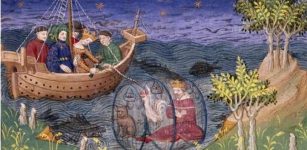 Science Fiction Was Around In Medieval Times – Here’s What It Looked Like
Featured Stories | Sep 18, 2018
Science Fiction Was Around In Medieval Times – Here’s What It Looked Like
Featured Stories | Sep 18, 2018 -
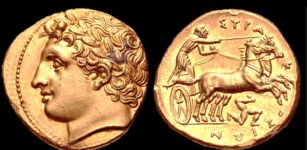 Agathocles Of Syracuse: Sicilian Ruler Who Committed Numerous Crimes Saved And Extended Sovereignty Of Sicily
Featured Stories | Jul 26, 2019
Agathocles Of Syracuse: Sicilian Ruler Who Committed Numerous Crimes Saved And Extended Sovereignty Of Sicily
Featured Stories | Jul 26, 2019 -
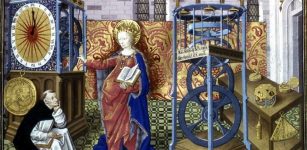 Minutes Did Not Exist During The Middle Ages
Ancient History Facts | Mar 2, 2016
Minutes Did Not Exist During The Middle Ages
Ancient History Facts | Mar 2, 2016 -
 The Mysterious Metaphysical World Of Isaac Newton
Featured Stories | Aug 21, 2018
The Mysterious Metaphysical World Of Isaac Newton
Featured Stories | Aug 21, 2018 -
 On This Day In History: Irish Saint Columbanus Founder Of Monasteries In Europe Died – On Nov 21, 615
News | Nov 21, 2016
On This Day In History: Irish Saint Columbanus Founder Of Monasteries In Europe Died – On Nov 21, 615
News | Nov 21, 2016 -
 Is There An Ancient Secret Connection Between The Statue Of Liberty And The Anunnaki Goddess Inanna?
Featured Stories | Sep 28, 2018
Is There An Ancient Secret Connection Between The Statue Of Liberty And The Anunnaki Goddess Inanna?
Featured Stories | Sep 28, 2018 -
 4,000-Year-Old Serpent-Shaped Wooden Stick Unearthed in Southern Finland
Archaeology | Jun 30, 2021
4,000-Year-Old Serpent-Shaped Wooden Stick Unearthed in Southern Finland
Archaeology | Jun 30, 2021 -
 William The Conqueror: Ruthless And Powerful Ruler Who Changed Britain Forever
Featured Stories | Feb 25, 2023
William The Conqueror: Ruthless And Powerful Ruler Who Changed Britain Forever
Featured Stories | Feb 25, 2023 -
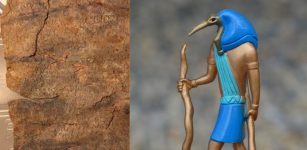 Curse Of The Dancer – Mysterious 1,500-Year-Old Tablet Finally Deciphered
Archaeology | Oct 14, 2019
Curse Of The Dancer – Mysterious 1,500-Year-Old Tablet Finally Deciphered
Archaeology | Oct 14, 2019

